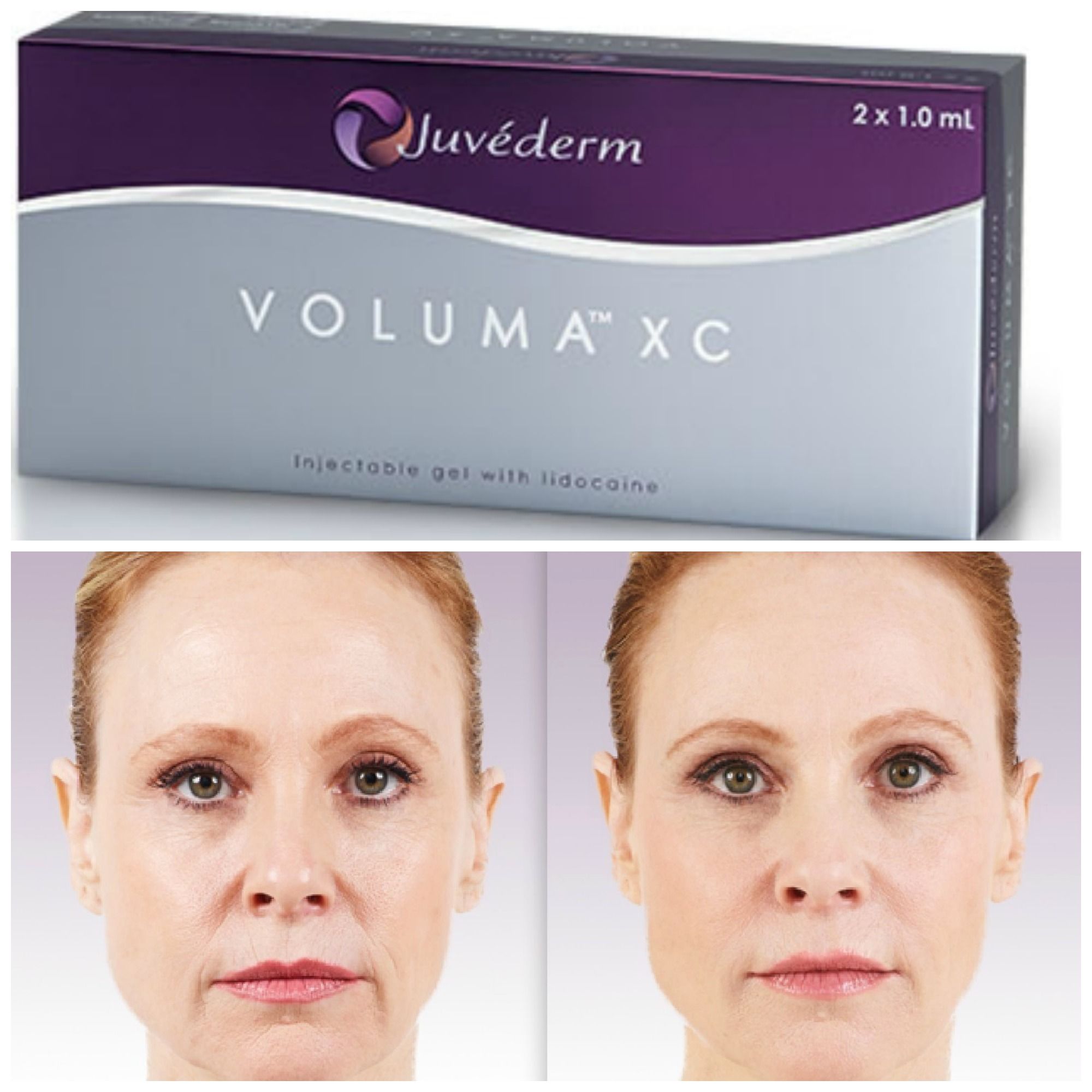What is Juvederm?
Juvederm is a hyaluronic acid-based dermal filler. There are several products in the Juvederm family. They all are used to help people address the facial signs of aging. Each product in the Juvederm line features different bonding and concentrations of hyaluronic acid. The different products are each tailored to target specific problems when injected into different areas and depths. Juvederm fillers have a smooth, gel-like consistency.
Juvederm types:
- Juvederm Voluma XC adds volume beneath your skin’s surface to increase the size of your cheeks.
- Juvederm XC and Juvederm Vollure XC address the loss of skin elasticity and fill out wrinkles and lines around the mouth and nose — known as smile lines.
- Juvederm Ultra XC and Juvederm Volbella XC work as nonsurgical lip enhancement treatments.
Preparing for Juvederm
Before a Juvederm treatment, speak with a medical professional about your cosmetic goals and expectations. Juvederm procedures are minimally invasive so they’re frequently done on the same day as the consultation. The procedure is minimally invasive and doesn’t need much preparation. Simple instructions to follow before your consultation and treatment generally involve avoiding medication like aspirin, ibuprofen, and St. John’s wort. And you’ll want to avoid alcohol in the weeks leading up to treatment. Smoking is also discouraged before treatment. Avoiding these things can help prevent bruising. Also, let your doctor know of any allergies or sensitivities.
Target areas for Juvederm
- cheeks: Juvederm Voluma XC
- around the nose and mouth: Juvederm Ultra Plus XC and Juvederm Vollure XC
- lips: Juvederm Ultra XC and Juvederm Volbella XC
How does Juvederm work?
Juvederm works by adding volume to the facial tissue through its active ingredient, hyaluronic acid. Hyaluronic acid is a natural substance found in the human body. It stimulates the production of the connective tissue that plumps the skin (collagen). As you get older, the production of hyaluronic acid and collagen decreases. This increases the appearance of sagging and wrinkling of the facial skin.
During the procedure, your doctor, physician assistant, or nurse typically uses a pen to mark the areas to be treated. Your doctor will then inject Juvederm into the target area. They will also lightly massage the area to ensure even distribution and reduce the chance of swelling. The entire procedure usually takes between 15 and 60 minutes, depending on the area treated.
Juvederm injections contain a small amount of pain-reducing lidocaine. This will help minimize any pain or discomfort you feel during treatment and make it go away quickly.
How Long Before Juvederm Takes Effect?
People love Juvederm because it offers a fast, efficient way to renew their skin and add volume to their faces. The injection process is quick and comfortable. After you receive your injection, you will immediately notice improvements in the targeted area. That said, this dermal filler takes a little time to soften after your treatment.
The Softening Process
After your medical provider injects the filler into your target area, the solution will move through your skin. The filler will smooth your wrinkles and improve your look immediately. Next, it will break down and move into your dermal tissue. Once the filler is in your dermal tissue, it will bind with water molecules in your skin. This process will hydrate your skin and enable the filler to achieve long-lasting results.
Your Ultimate Results
The filler can take several weeks to soften and settle into your skin. This means that patients won’t see the ultimate results of their treatment immediately. Although individual results will vary, many people achieve the full effect within two weeks after receiving their injections. Generally speaking, Juvederm patients will see the final results settle in after two weeks. It stimulates your body’s natural collagen production for long-lasting results.
Enhancing Your Results
You can follow several steps to achieve optimal results and help your skin renew and heal. You should avoid engaging in strenuous exercise the day after you receive your injection. You should also avoid getting too much sun. This is because the ultra-violet rays that the sun sends out may harm the hyaluronic acid in your fillers. You can reduce the sun’s harmful effects by wearing protective clothing and using high-quality sunscreen. You also should not drink wine, beer, or other alcoholic beverages during this time.
Risks and side effects
You can expect some swelling and bruising. Other common side effects include:
- redness
- tenderness
- lumps or bumps
- minor pain
- itching
All of these side effects usually subside within two to four weeks. More serious side effects are typically associated with unprofessional handling, like injecting Juvederm into a blood vessel unintentionally. Complications can include permanent scarring, vision abnormalities, blindness, or stroke. That’s why it’s very important to choose your doctor wisely. Make sure that they are trained, certified, and licensed to perform the procedure.
What to expect after Juvederm
Recovery time is minimal. But, people are advised to avoid strenuous activity, sun exposure, wearing makeup, and consuming alcohol for at least 24 hours post-treatment. Most notice the effects of Juvederm right away, or after the swelling reduces. Results typically last between six months and two years. This depends on which Juvederm product was used.
How much does Juvederm cost?
As of 2016, the national average cost of hyaluronic acid injections such as Juvederm was $620 per syringe. The cost of a Juvederm treatment can vary depending on your physician’s experience, geographic location, and the number of syringes used. Since dermal fillers are an elective treatment, health insurance does not cover the cost. SEE: How Long Does It Take Restylane To Settle






